Lahore is one of the most blessed cities of world, which has beautiful architectural sites jewelled in almost every corner of the city. Having a dense and ancient lineage of history, the city is curated with architectural monuments and sites which are a pleasure to visit.
Lahore witnessed different eras of Mughal time, the Sikhs, and the most recent one the east India company powered by the britishers. Lahore underwent an overhaul during each tenure thus the current shape is a highly rich architect embellished across the city.
We have listed a few very famous architectural sites for you to visit and be amazed and take a trip down memory lane to relive the grandeur and extraordinary times of the past that this city endured.
Badshahi Masjid
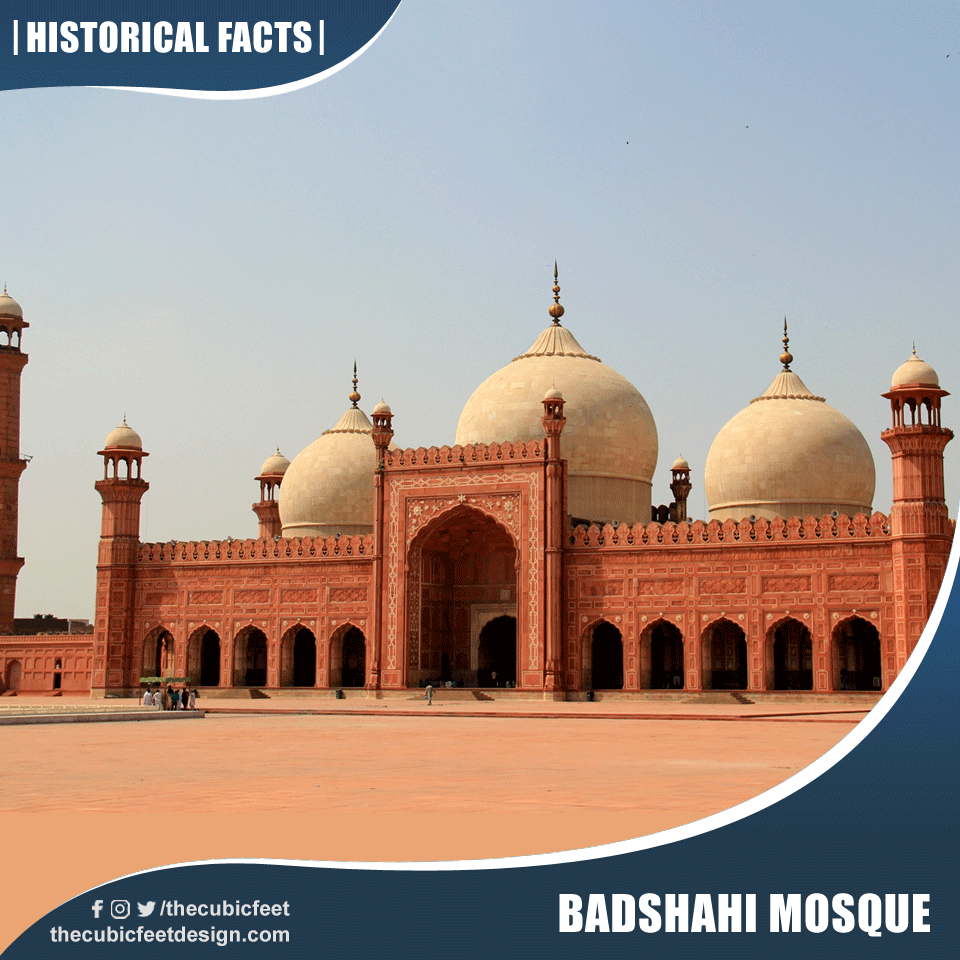
- Badshahi Mosque is located in the west of Lahore Fort; in the outskirts of Walled City of Lahore.
- Constructed by Mughal Emperor Aurangzeb between 1671 to 1673.
- Perfect example of Mughal Architecture, Indo-Islamic.
- It is the second-largest mosque in Pakistan.
- Exterior is decorated with carved red sandstone with marble inlay.
- The interior is an elaborated plaster work which encompasses the mosque completely.
- It has 4 major and 4 minor minarets and 3 domes.
- It has the capacity to hold 100,000 persons at a time.
Wazir Khan Mosque
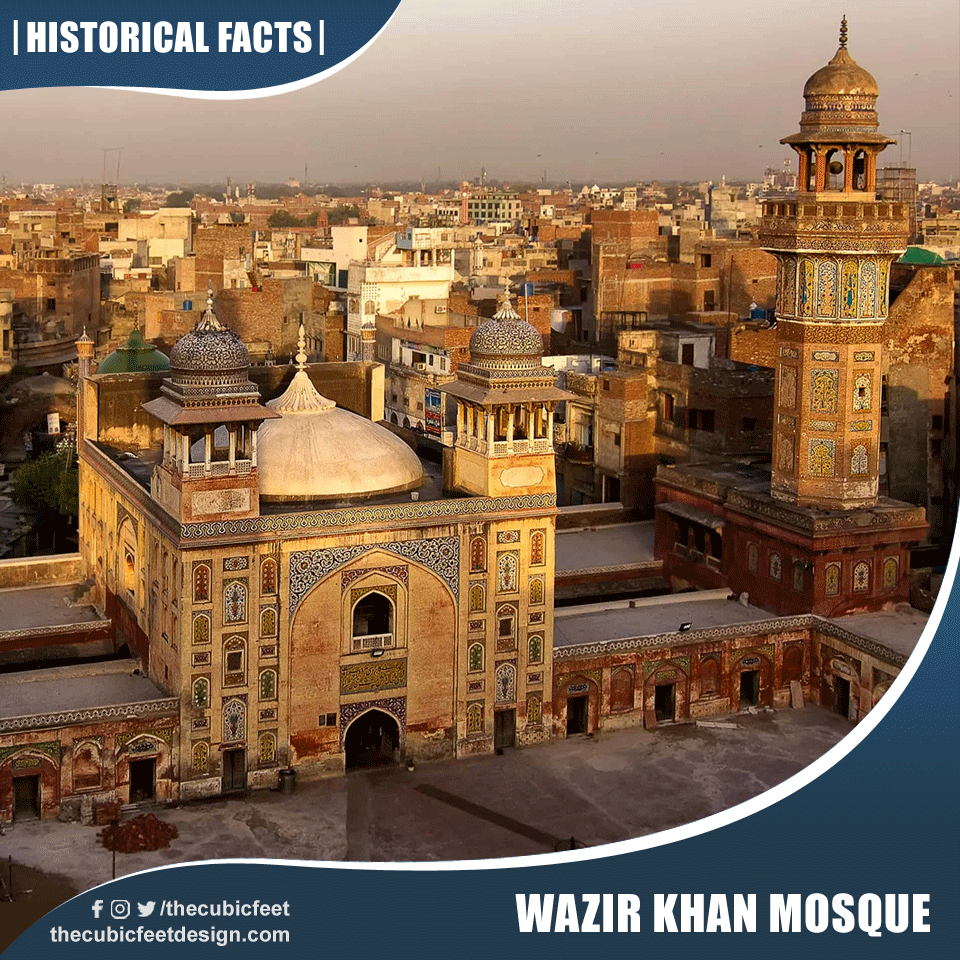
- This 17th century mosque is on the UNESCO World Heritage Tentative List.
- It was commissioned by Mughal Emperor Shah Jahan.
- Construction was completed by 1641.
- It is renowned for its intricate faience tile work called Kashi-Kari, as well as its interior surfaces.
- Architectural style is indo-Islamic/Mughal.
- The facades comprise of richly embellished motifs and pallets which depict Persian hierarchy.
- Persian-style colors are used like lajvard (cobalt blue), firuzi (cerulean), white, green, yellow, orange and purple.
- Entry portal is decorated with calligraphy which includes verses from Quran and saying of Prophet Muhammad (pbuh).
Minar-e-Pakistan
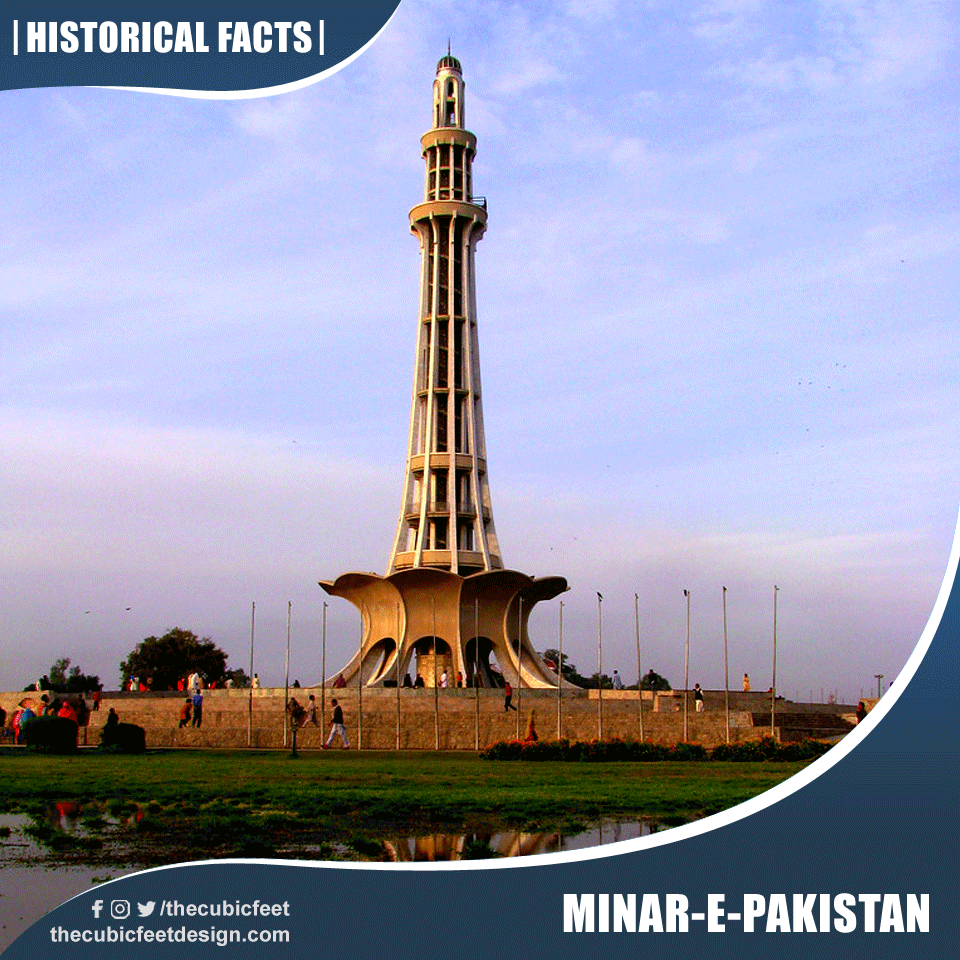
- Minar-e-Pakistan is a national monument located in Lahore, Pakistan.
- It was built between 1960 and 1968 at the site where all India Muslim League passed the famous Lahore Resolution on 23rd march, 1940.
- Architect was Nasreddin Murat-khan; a Russian-born Pakistani architect and civil engineer.
- Architectural style is Mughal/Islamic amalgamated with Modern Architecture.
- Unique aspect of this monument is the floral inscriptions on ten converging white marble commemorative plaques.
- Text of Lahore Resolution is engraved in Urdu, Bengali and English.
- Also known as “Liberty Tower of Pakistan”.
Sheesh Mahal
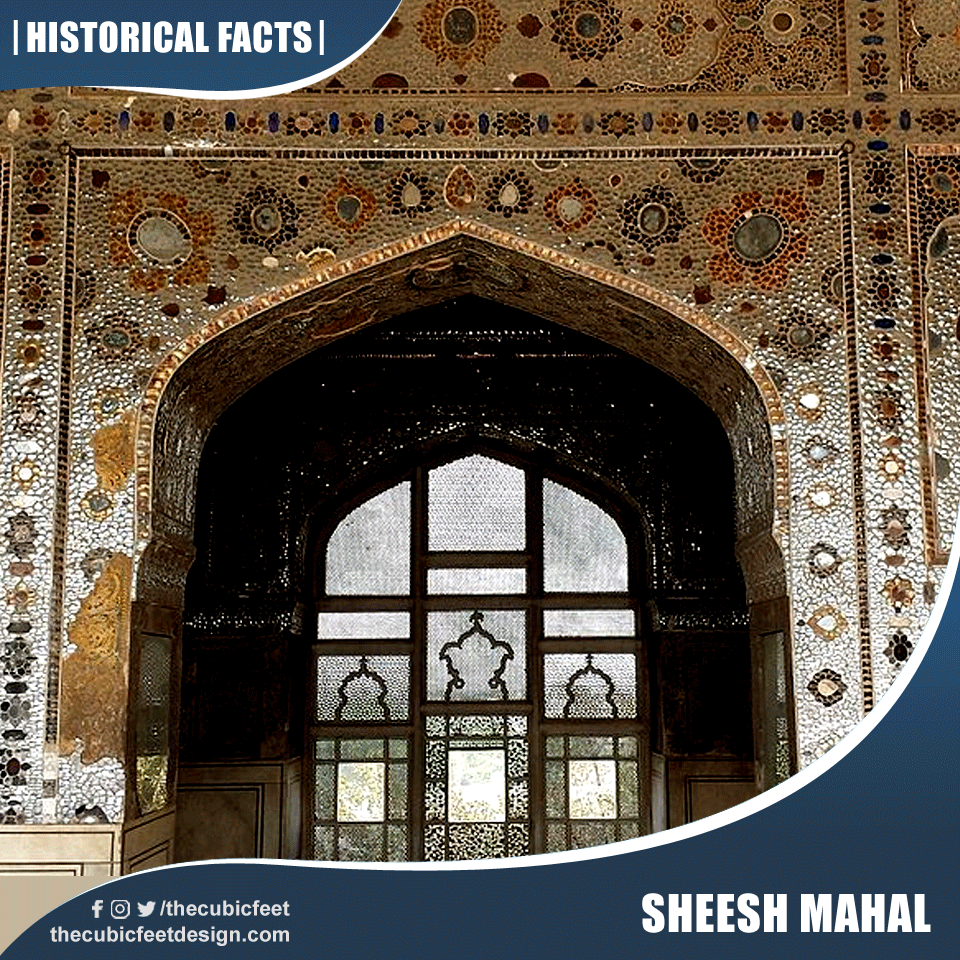
- It is located within the Shah Burj block of Lahore Fort.
- It was constructed during Mughal emperor Shah Jahan’s reign 1631-32.
- Architect is Asif Khan.
- Architecture style is the typical Mughal architecture.
- The white marble pavilion comprises of complex mirror-work of the finest quality.
- It is known as the Jewel in the Fort’s crown.
- It has been inscribed as a UNESCO World Heritage Site since 1981.
Lahore Museum
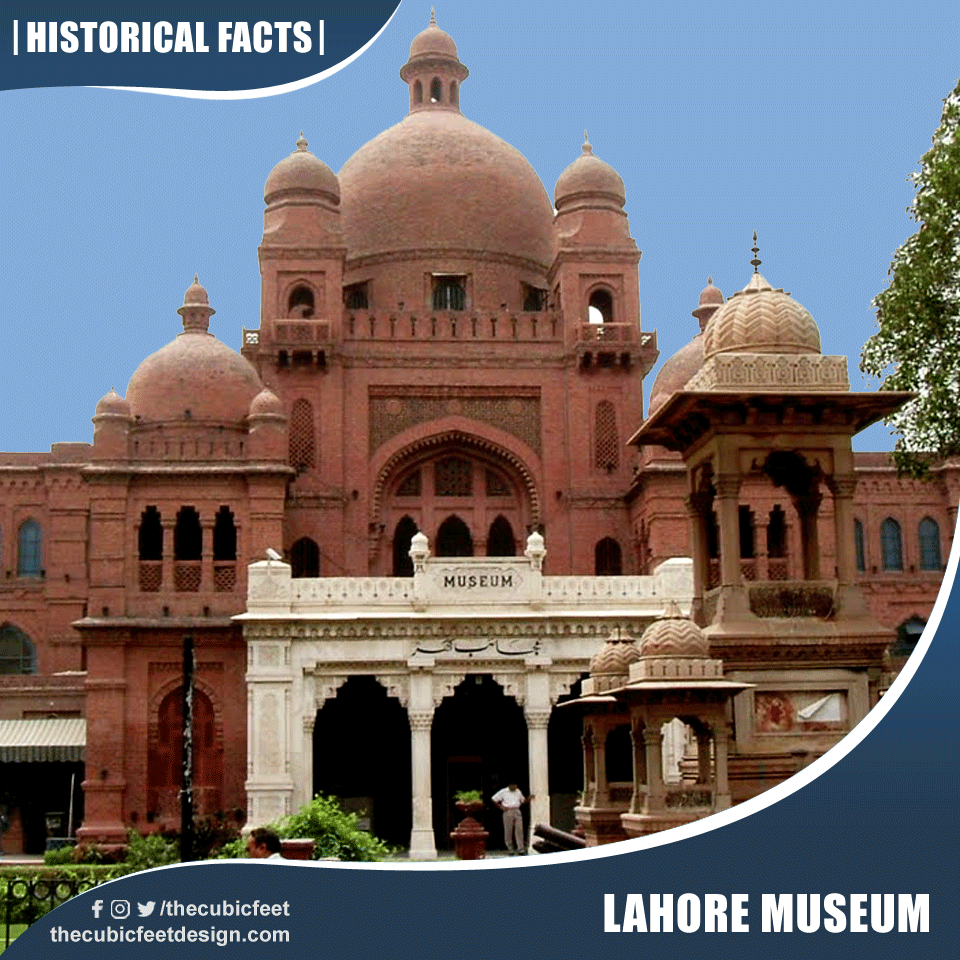
- Lahore museum was constructed in Lahore during the British period (1849-1947)
- It is the house of country’s largest, oldest collection of historical, cultural and artistic objects.
- It has some of the rarest Buddhist, Gandhara sculpture, miniature paintings and old coins.
- Architect was Sir Ganga Ram.
- Architectural style is Indo-Saracenic: Revival.
- Made with majestic red brick; which defines the architecture of Mughal, British era.
- It is one of the most visited and major museums in South Asia.
Hazuri Bagh Baradari
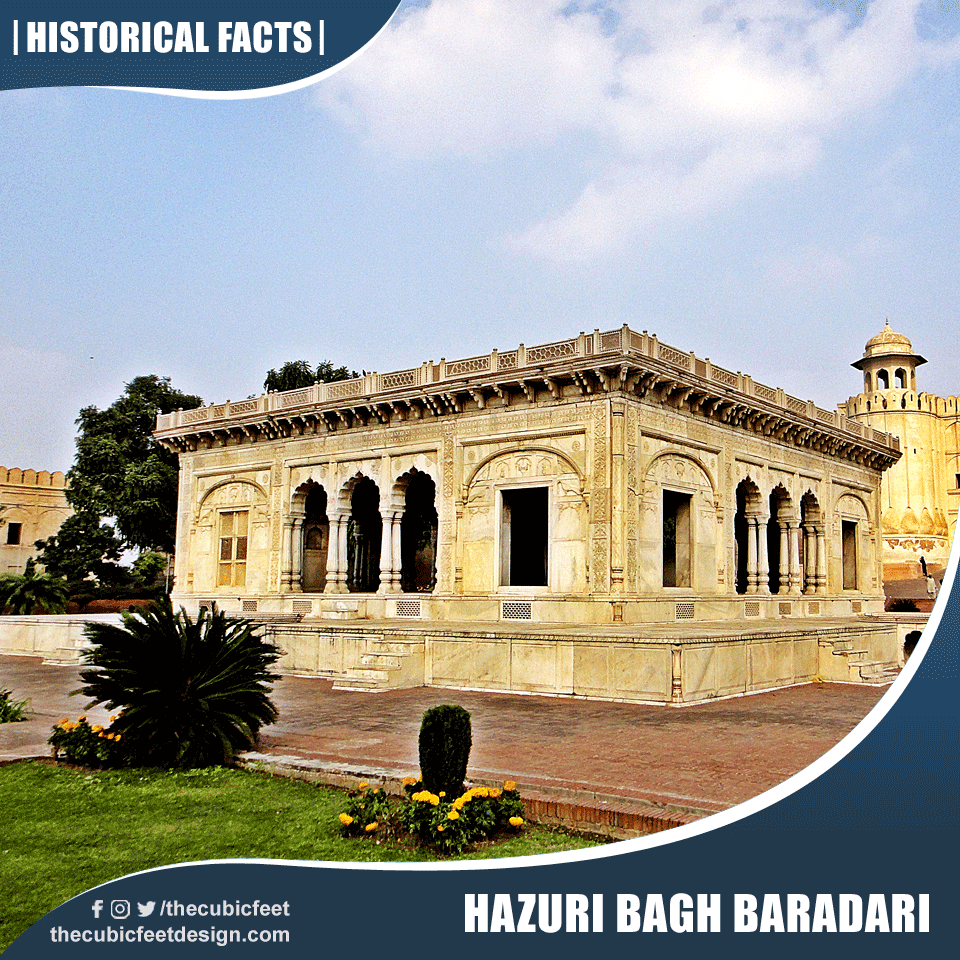
- Baradari was built by Maharaja Ranjit Singh to celebrate the capture of Koh-I-Noor diamond
- It is made up of white marble
- It was constructed in 1818
- Maharaja use to hold his court here
- Termed as chef d’aeuvre of Sikh reign
- It has mirrored ceiling and the cusped arches make it very appealing
- Heavy Jaali work is done on façade which is deeply influenced by Mughal architecture
- Baradari had 2 levels, above one was destroyed by a strong storm in 1932 and was never rebuilt
- Comprises of a central chamber with 12 columns over scalloped arches and an open perimeter
Tomb of Anarkali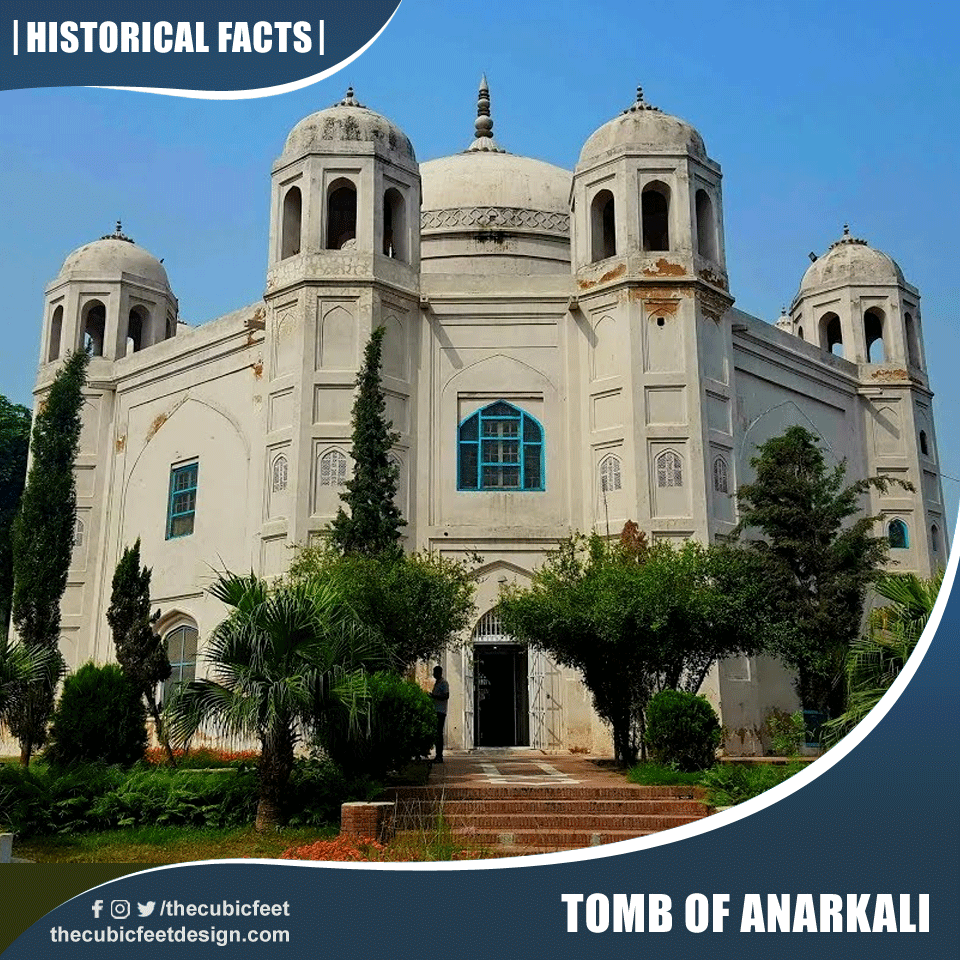
- A beautiful octagonal 16th century monument in Lahore
- Architectural style is Mughal
- Constructed between 1599-1615
- Legends says it was built by Mughal Emperor Jahangir for his love as per the historians – Anarkali
- The tomb served as residence for Kharak Singh during the Sikh era
- It was converted into clerical offices in 1847 under the rule of British Raj
- It is a small tomb of 44 feet x 30 feet in each side with semi-octagonal towers on each end
- It sports a double-dome, a typical component of Mughal architecture
- The white marbles cenotaph has carvings of 99 names of Allah and has been termed as “one of the finest pieces of carving in the world”
- It is enlisted in the Protected Heritage Monuments of the Archaeology Department of Punjab
Chau Burji Chowk
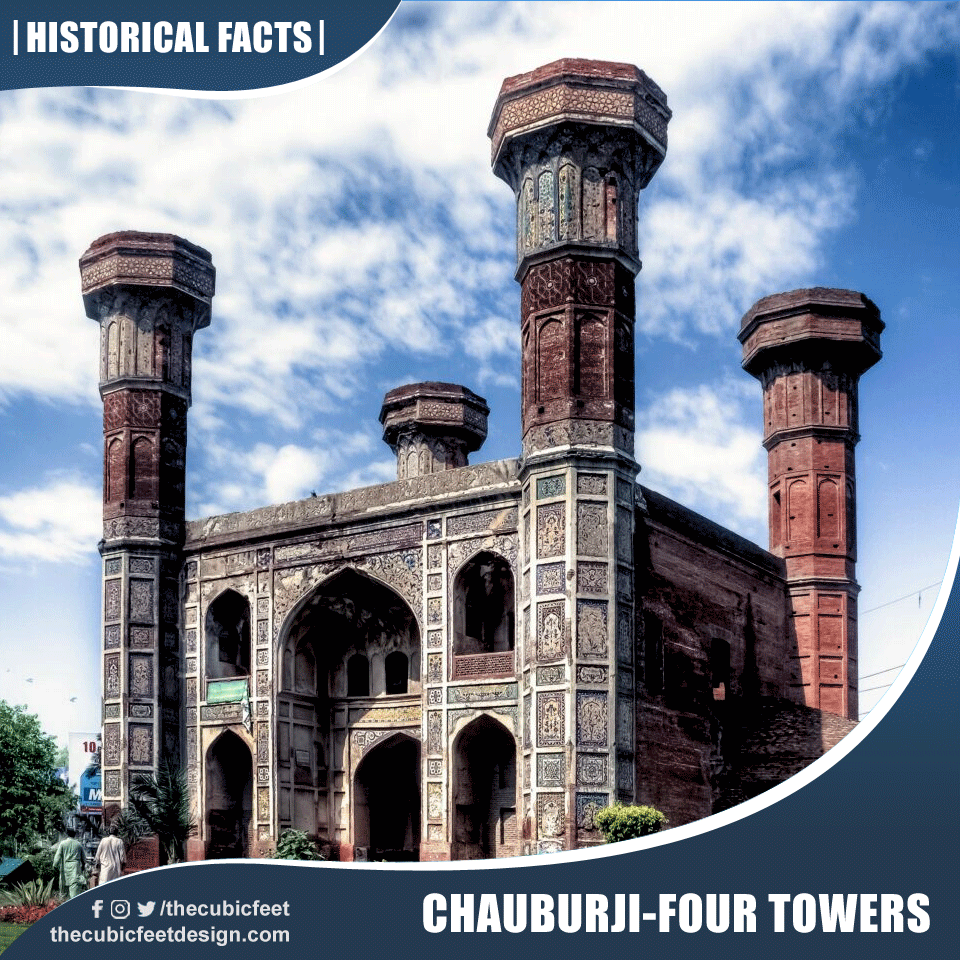
- It means “Four Towers”, a monument from the times of Mughal era
- It was built in 1646 by Emperor Shah Jehan
- It was built as a gateway for a lost garden which fell victim to river flooding.
- It is now a busy roundabout.
- Architectural style is a mix of Mughal architecture and Timurid style from Central Asia
- The minarets which widens from the top is a distinguished feature of Perso-Arabic style
- It was marked with beautiful blue and green Kashi Kari tile work across the monument which faded over the passage of time.
- Government of Pakistan restored the monument as much possible in 1960s after a massive earthquake hit the building.
Dai Anga Tomb
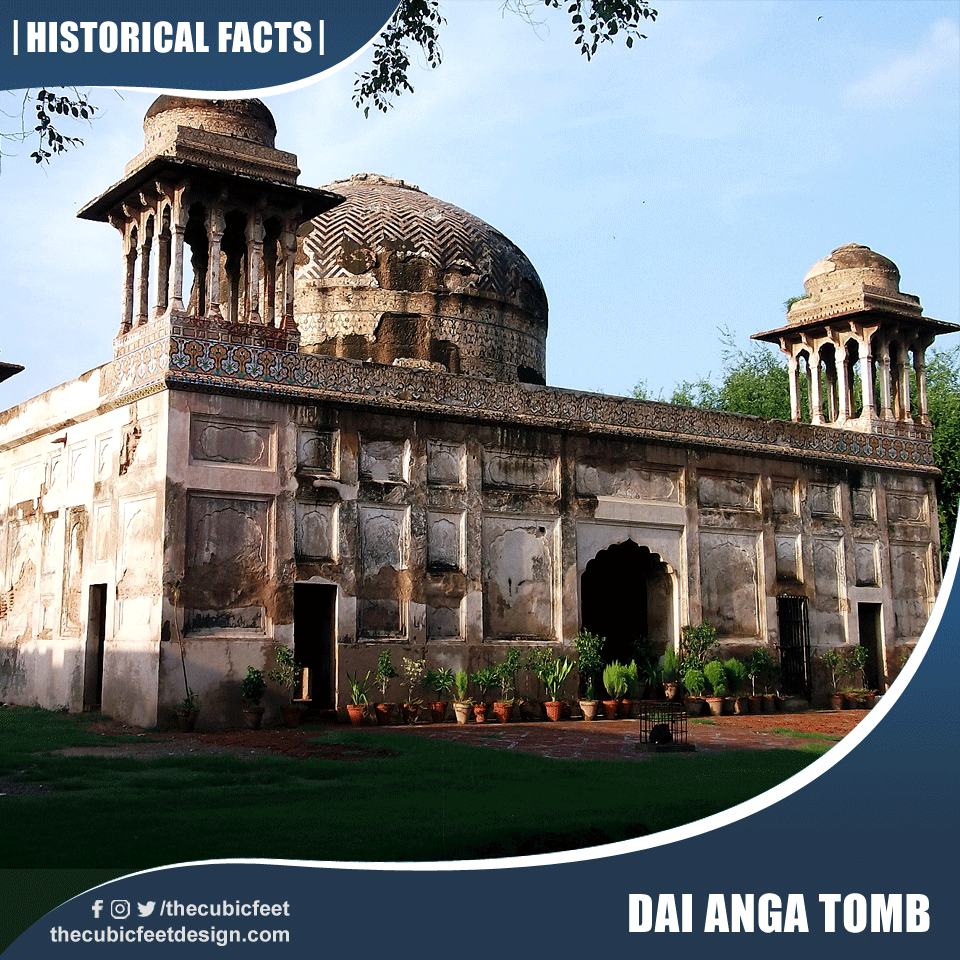
- It is the last remnant of pleasure garden built by Persian noble Mirza Sultan Baig in 1655
- It was converted into tomb for Dai Anga in year 1671
- Dai Anga was wet nurse of Mughal emperor Shah Jehan
- Architectural style is Mughal
- The gateway to the tomb is heavily embellished with Kasha Kari or Qashani tile-work
- The mausoleum is rectangle in shape comprising of 8 rooms.
- It is richly decorated with inscriptions of Quran carved on the walls. And elegant frescoes made by the famous calligrapher Muhammad Saleh.
- It has been taken over by UNESCO World of Heritage Sites
Shalamar Gardens
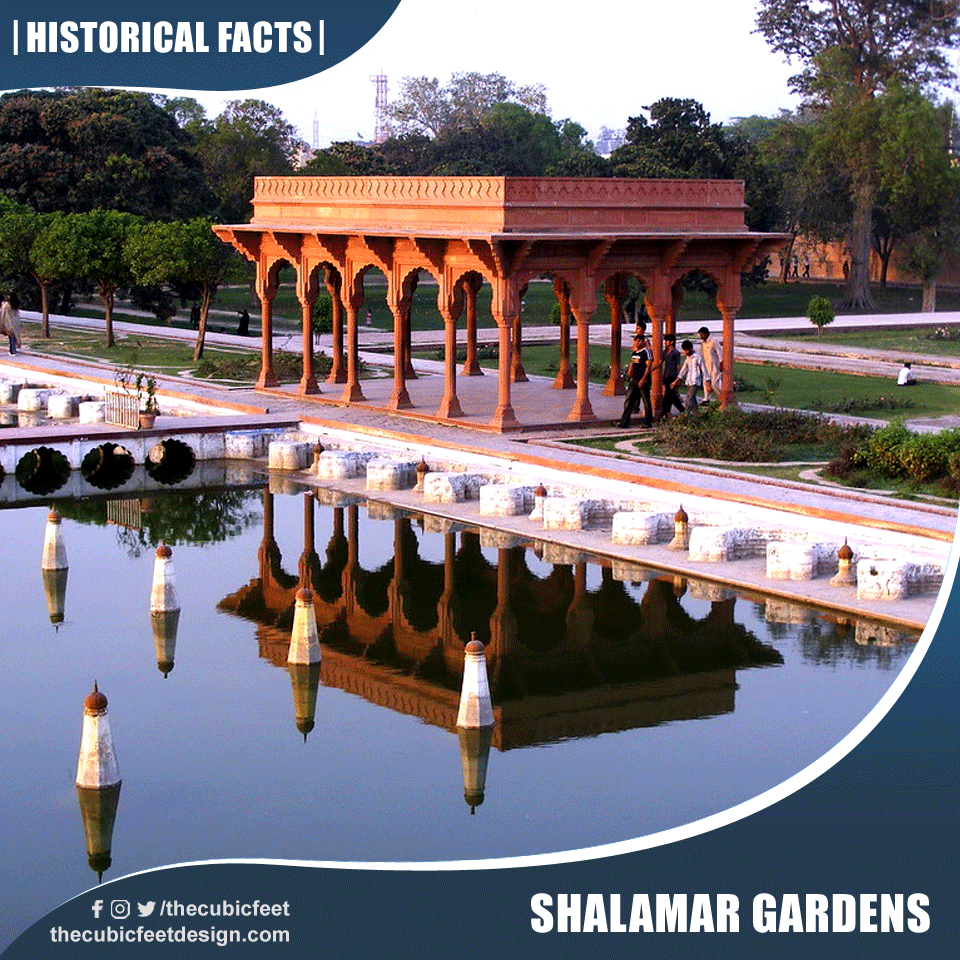
- Garden representing Mughal era were created with artistic and aesthetic zenith
- The lay out was similar to the Persian paradise garden to show that nature and humans co-exist in harmony
- Designed similar to Timurid gardens, a high brick wall was richly decorated with intricate work to allow the construction of Charbagh
- Constructed from 1641 to 1642
- Project was design by Khalilullah khan
- Gardens used to hold the annual Mela Chiraghan till it was forbidden in 1958
- The gardens were inscribed as UNESCO world heritage site in 1981.
Tomb of Jahangir
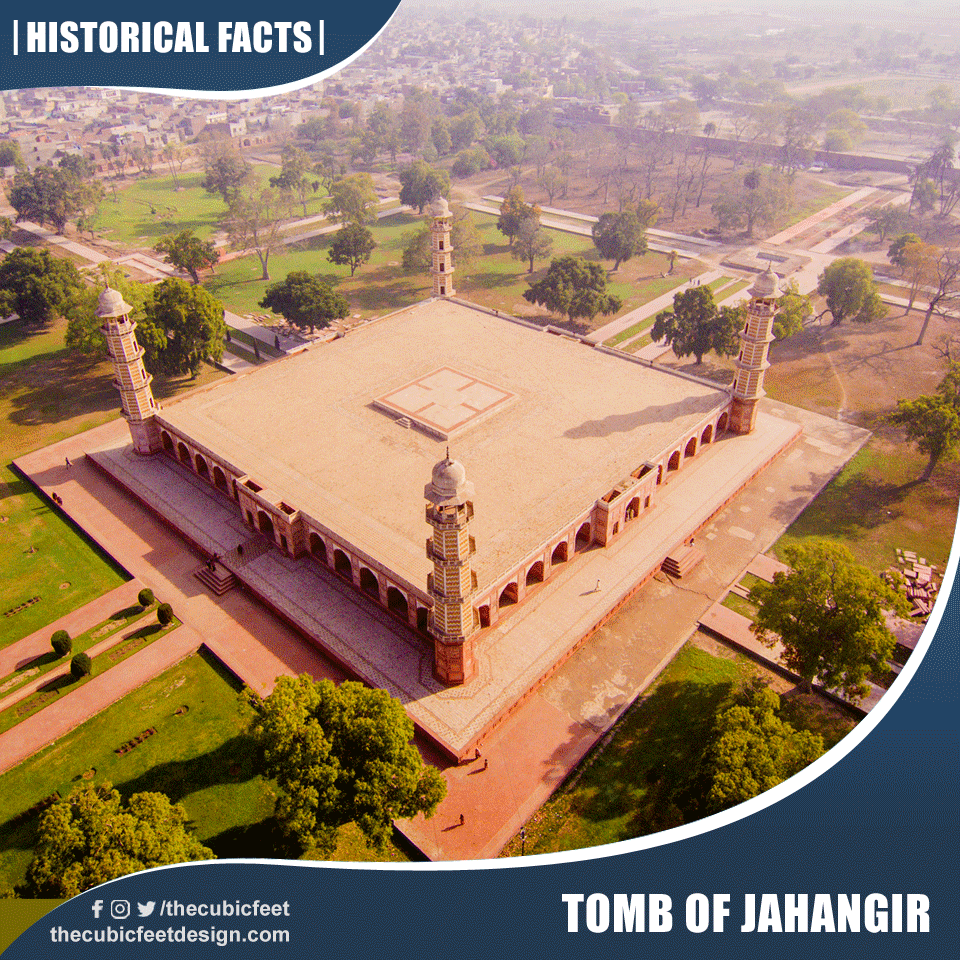
- A 17th century mausoleum built for Mughal emperor Jahangir
- Located in Shahdara Bagh, Lahore
- Interior is extensively embellished with marble and frescoes
- Exterior is beautifully decorated with Pietra dura
- It took 10 years to construct it
- Architectural style is highly influenced by Safavid-style from Persia
- Mausoleum’s façade is made of red sandstone with motifs forged of white marble
- Building has four octagonal ornamental minarets as well decorated with geometric inlaid stone.
Tomb of Asif Khan
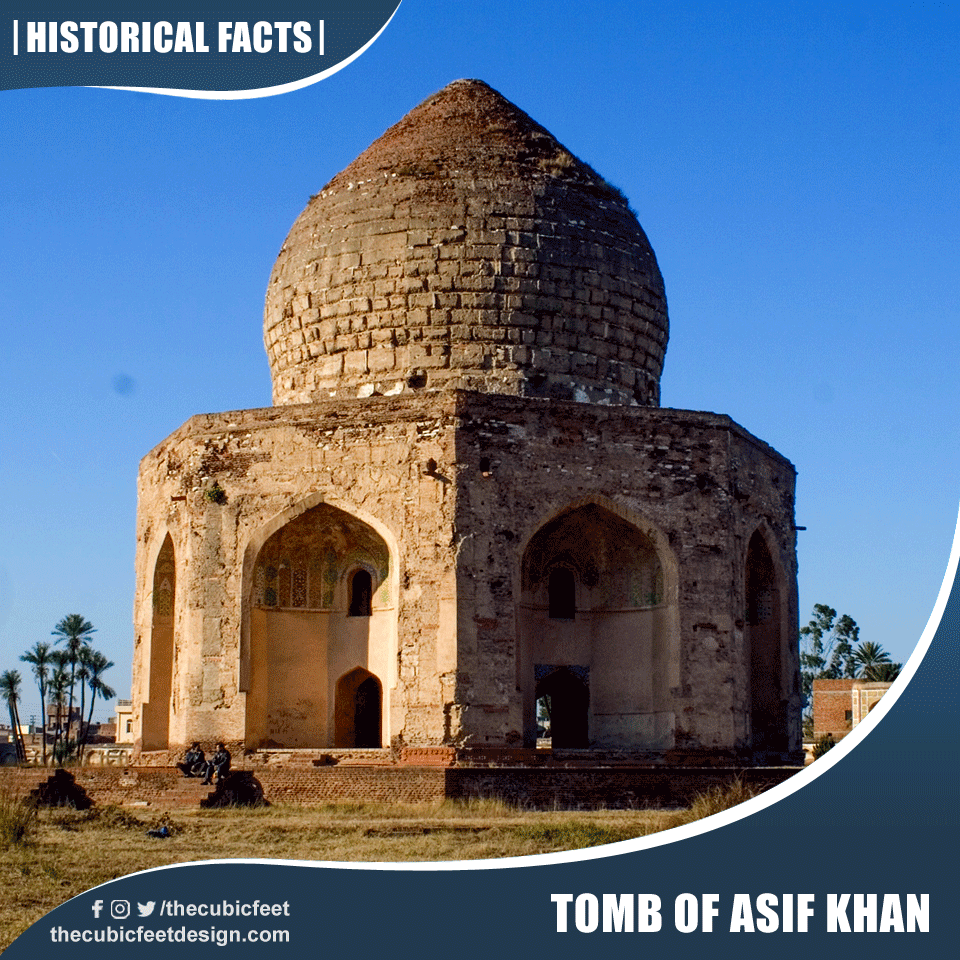
- A 17th century mausoleum located in ShadraBagh, Lahore
- It was built for Asif Khan; brother of Nur Jehan and brother in law of emperor Jahangir
- Architectural style was Central Asian or Persian
- Tomb was plundered in Sikh era for its marble and sandstone
- Tomb is built on an octagonal plan, set upon a chabutra or a podium
- Exterior was glorified with marble stone inlay with stucco tracery and blue Kashi Kari tile work
- Each side of tomb has separate deewan or alcove.
- Interior has interlaced pattern on red sandstone which were removed in Sikh era
- It’s a UNESCO World Heritage site and conservation work was resumed on tomb in 2005
Akbari Sarai
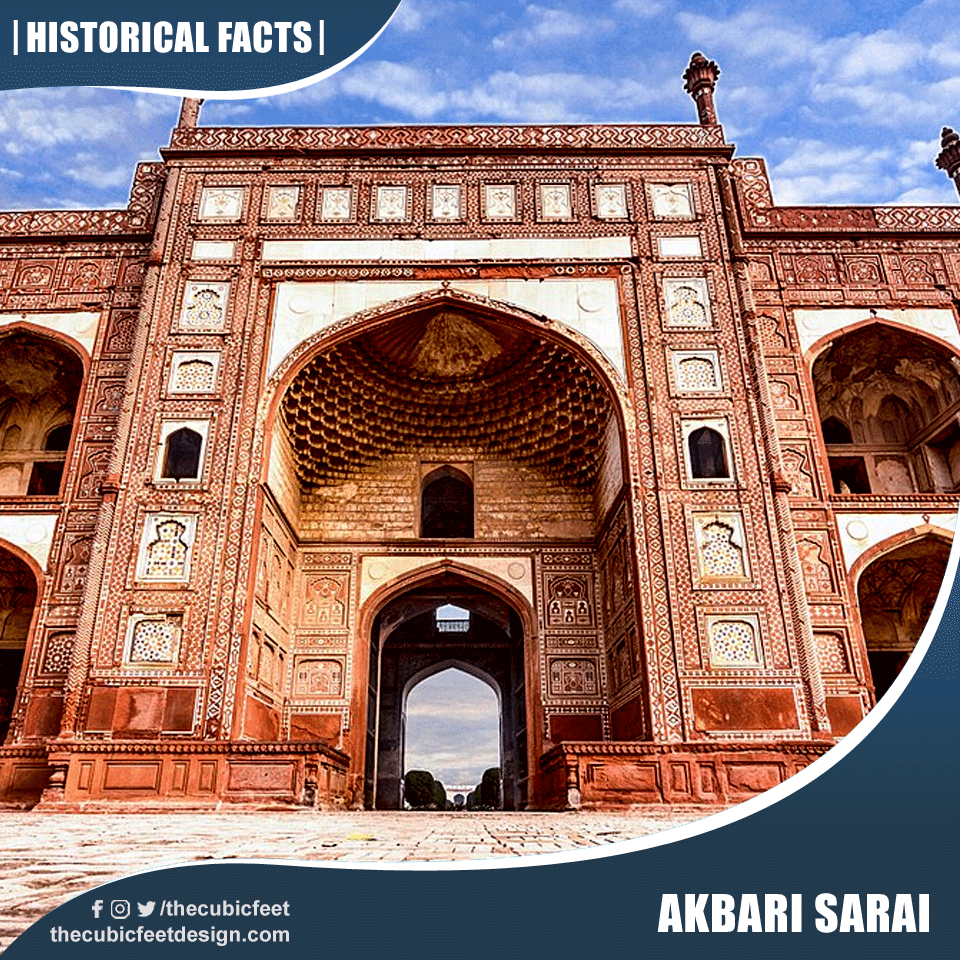
- Sarai is name given to caravan inn in Urdu language
- It was constructed in 1637
- This Sarai was built for the caretakers of tomb of Jahangir
- It is the best preserved conservation site of Pakistan
- Sarai is cornered with tower chambers which elaborate the cells of Sarai in front of veranda and elliptical hall
- The structure is heavily influenced by Pietra dura
- Red sandstone can be seen along with embellished frescoes and Ghalib Kari
- It was also called Jilu Khana-e-Rauza in old times
Data Darbar
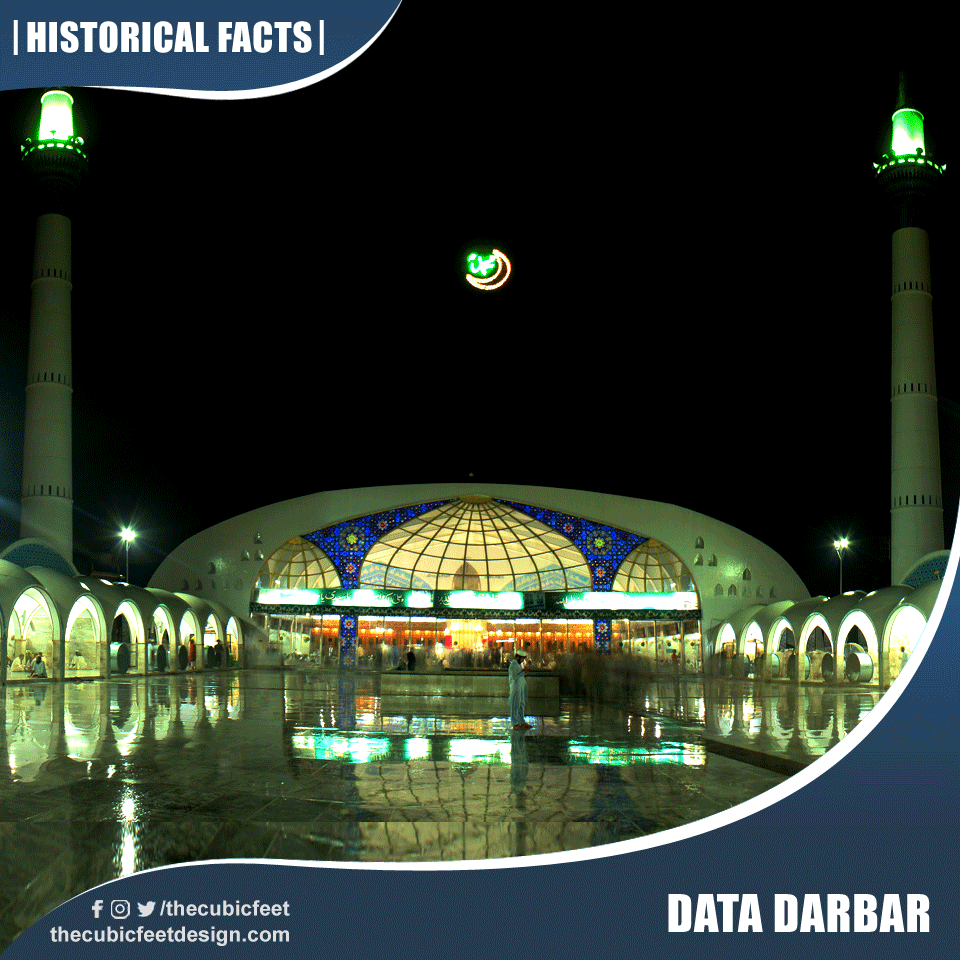
- Data Darbar is the largest Sufi shrine in South Asia
- It is located in Lahore
- It was built on the remains of the house of Ali Hujwiri, commonly known as Data Ganj Baksh.
- One of the most sacred and holy places of Pakistan
- The architecture is Mughal and it is carved with white marble.
- The massive courtyard is embellished with white marble whereas the educational components of the shrine have hint of modernist architecture.
- Attracts over a million visitors at the annual Urs festival
- The premises holds offices, library, madrasa, police station
- Shrine remains open 24/7 and visitors are free to visit at any odd hours
- It is operated under the Aukaf Ordinance of 1960
Also Read: Top 15 Historic Buildings and Landmarks of Karachi





